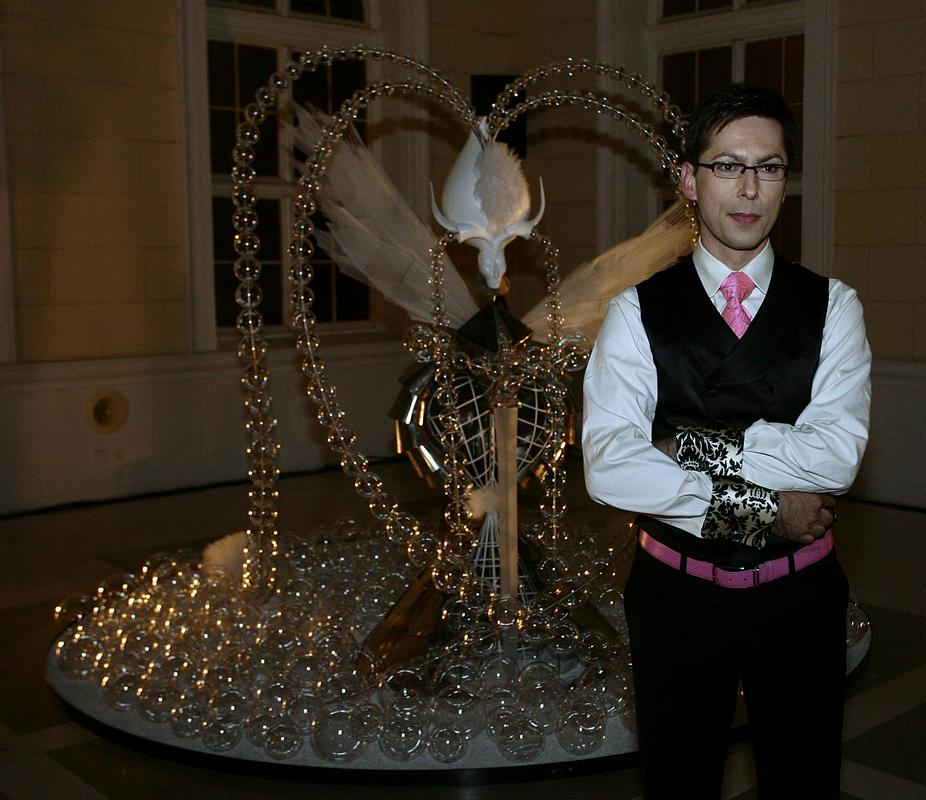
Born in the turbulent, iconoclastic year of 1968 in Zagreb, Croatia, Hranitelj was drawn to fashion design from his earliest years. But even as a teenager, he liked to do things his own way and when he was just 16, he dropped out of school and moved to Ljubljana.
In the years that followed, he emerged as a highly original fashion designer, and even spent a year working in Milan. However, he was bored by the daily routine of fashion design and was determined to try something different. He began to design costumes for the theater, and his post-modern approach -- featuring extravagant costumes that mixed influences from different eras in utterly unique packages --soon began to draw the raves of theater critics. Some even proclaimed his designs to be magnificent works of art, and Hranitelj soon received attention afforded to few other costume designers.
Even his appearance was distinctive and immediately eye-catching: Most of his own clothing was black and white, and featured incongruous elements such as tailcoats, lace, and military boots – and the outfit was typically complemented with a thick layer of makeup. Bursting with creativity, Hranitelj often created art on a whim: On one occasion, he made several sculptures out of salt.
Increasingly, the artistic quality of Hranitelj’s work was recognized abroad. His work was displayed at exhibitions from Denmark to Brazil, but his biggest break came in Canada. He had always been fascinated by Cirque du Soleil. He admired the artistic designs of the Quebecois troupe that had gracefully combined theater with circus. Hranitelj sent samples of his work to Canada and was eventually invited to work with Cirque du Soleil as a costume designer. There, he got an opportunity to share his boundless imagination with worldwide audiences.
Nevertheless, Hranitelj still retains strong bonds with Slovenia, where he spends several months every year and continues to design clothing and costumes for many clients. He has styled everything from corporate uniforms to costumes for Slovenian film. Not matter how different in appearance, his work is always marked with a strong artistic message, as sense of humor -- and a taste for the absurd.

































































